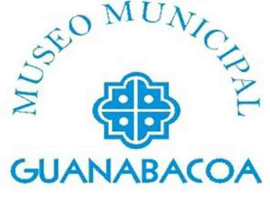Municipal Museum of Guanabacoa Guanabacoa, Havana, Cuba
The Municipal Museum of Guanabacoa, founded July 26, 1964, is a public institution of the Cuban state, whose main headquarters is a colonial house of the nineteenth century. The house is widely known as the “Waitress’s House,” where once lived the waitresses of the Virgin of Asunción of Guanabacoa. Inaugurated in 1964, it was the first museum of its kind in Cuba and featured exhibitions of religious ethnology. A half-century later, its religious ethnology collections continue to be one of the largest draws for visitors.
In 1992 the headquarters also inaugurated a House-Museum of the Martyrs and, in 2011, added a House-Museum of the Artists, completing an extensive complex of museums that embraces several collections that include art, history, archaeology, and ethnology.
The ethnological collection is dedicated to items that are representative of the main expressions of the Afro-Cuban religions. Much of the collection relates directly to slavery in Cuba and the significance of African contributions to Cuban culture.
The museum’s strong ties to the local community allow it to be a meeting place for a series of activities related to slavery and African culture.
The Museum features the following seven collections: Religious Ethnology, Ornamental Arts and Furniture, Painting and Drawing, Weapons, Archaeology, Objects of Historical Value, Documents and Pictures.
At the beginning of the sixteenth century, the introduction of slaves began in the New World, and in Cuba. During the eighteenth century, the Cuban sugar industry became all-important for the guanabacoense. During this time, Guanabacoa possessed more than 25 sugar factories some of which were considered by their capacity and production volume among the biggest in the country.
These factors, together to the characteristics of the climate and the waters of Guanabacoa made possible the residence of wealthy families of San Cristóbal’s Villa (Havana), with their consequent endowments of slaves.
The men and women who were torn from their homes and subjected to the cruelty of slavery brought with them their experiences and religious beliefs. However, they were forbidden from practicing their cults and were forced to Christianize, which began a complex process of transculturation. In this encounter, clash, and fusion of cultures was born new religious expressions from the union of African spiritual forms and Catholicism. Among those religious expressions that have arisen are Santería or Regla de Ocha, the rule or cult of Palo Monte, and the Abakuá secret society.
The Museum of Guanabacoa presents an interesting exhibition about these cults, with objects representing the powers of orishas and deities. This includes offerings, typical costumes, and musical instruments that make up the important collection of religious ethnology and constitute valuable examples of material culture. A visit to this collection offers a striking view of this beautiful traditional popular culture.
Since its creation in 1964, the Museum of Guanabacoa has undertaken the work of rescuing objects relating to Afro-Cuban rites. The museum exhibits, for the first time in Cuba, a whole collection of goods corresponding to the religious expressions of African origin. Carriers of these religious expressions are the followers of a heritage of traditions, habits, spiritual values, and materials that give traditional popular culture a genuine singularity, which helps give authenticity the national culture and in particular the culture of Guanabacoa. Our institution offers visitors a tour of these exhibits and an explanation of this religious world and its influence on the formation of the Cuban nationality.
A very characteristic activity of the Museum is educational and cultural guided visits that contributing to revitalizing cultural traditions as a sign of the intangible heritage emanating from popular cultures.
These visits to the Museum show the close relationship between the conceptual explanation of objects and the particular actions of the folk group who created them. This gives visitors a cultural message as well as information about the environment, customs, and traditions relating to objects and their material and spiritual values.
This cultural option that identifies the Museum and makes it so attractive to visitors, is contributing to the recognition of heritage which responds to community interests in the expression of cultural and social identity. Thus, it facilitates the rescue of the intangible heritage formed by language, music, dance, mythology, rituals, and customs.
To maintain in Guanabacoa a strong presence of African influence, the Municipal direction of culture and its museum hosts an event every three years in November. These are the Festival of African roots: “Wemilere,” and the “Presencia” Colloquium; with the Colloquium being held in years when there is not a Festival.
The Festival of African roots: “Wemilere” is municipal event with foreign participation, which aims to rescue and keep alive the bonds of identity with African culture. An art contest and many cultural options support community discussion. It is a tribute of the territory to the African brothers and their legacy to the Cuban and Latin American culture.
The Presencia Colloquium is organized and run by the Museum in order to preserve and promote the cultural values of the African legacy. This is a unique exchange between scholars and researchers of this theme and the local community, the bearers of these living traditions. It is a space open to the discussion of topics, papers, or research related to the African footprint on cultures of Cuba, America and the Caribbean, through its most varied aspects.
The Municipal Museum of Guanabacoa is part of the Slave Route Project, Cuba, network organized by the National Council of Cultural Patrimony in Havana, Cuba.
Related Topics:
Related Pages:
-
 Plaque commemorating the arrival of the first enslaved people
Plaque commemorating the arrival of the first enslaved people
-
 Religion and Slavery
Religion and Slavery
-
 Buenaventura Lucumí
Buenaventura Lucumí
-
 Alejandro de Humboldt National Park
Alejandro de Humboldt National Park
-
 The Caribbean
The Caribbean


